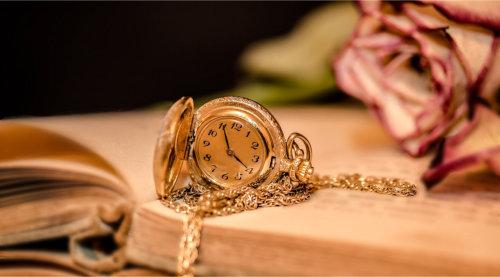With all the advancements in technology and the constant flow of new ideas, it’s easy to forget that some of the best organizing tips have been around for
generations. The ways our grandparents and great-grandparents kept their homes, schedules, and lives in order still offer valuable lessons today.
Let’s explore some of these old-school organizing tips that have stood the test of time—and still work like a
charm!
1. A Place for Everything and Everything in Its Place: This classic organizing mantra has been around for generations, and for good reason. Back in the day, people had fewer things but used them with purpose. Designating a home for every item, whether it was in the kitchen, workshop, or sewing room, prevented
clutter and saved time. When you know exactly where something belongs, there's no wasted energy searching for it.
In modern life, this translates well to every area of your home. Label drawers, bins, and shelves, and be sure to return items to their designated spots after each use. Whether it’s your keys, mail, or your favorite crafting supplies, having a “home” for everything reduces stress and keeps your space clear and tidy. 2. One In, One Out Rule: While today’s world offers us the luxury of abundance, previous generations had limited resources and storage space. A common practice was to only bring in something new when the old one was no longer useful. This kept homes from becoming cluttered and kept possessions manageable.
This same lesson can help you keep clutter at bay today. Try the one in, one out rule: every time you buy a new item of clothing, book, or kitchen gadget, let go of an older item that no longer serves you. This simple practice helps keep possessions at a reasonable level, making them easier to organize.
And, by the way, the one in, two out rule is even better. Instead of maintaining your volume of stuff, this rule allows you to begin getting rid of possessions, making your home and mind feel lighter.
3. Declutter Regularly: Our ancestors were no strangers to decluttering. Spring cleaning wasn’t just a tradition—it was a necessary part of life to refresh and declutter the home. Houses were aired out, things that were no longer needed were given away, sold, or discarded, and every corner was cleaned to make way for the new season. We can embrace this tradition in modern life by
decluttering regularly. Make a point of doing a seasonal purge of clothes, paperwork, and household items. Decluttering your space will make room for the things that bring joy and keep your home organized and functional.
4. Use What You Have: Long before minimalism became trendy, people had to be resourceful and make
do with what they had. Hand-me-down furniture was reupholstered, jars were repurposed for storage, and old clothes were patched or sewn into quilts. This practical mindset kept waste down and homes organized with a creative, thrifty twist.
Today, this principle still applies. Before rushing out to buy new organizing bins or decor, take
a look around your home and see what you already have that could be repurposed. Maybe an old dresser could be transformed into storage for your office supplies, or vintage jars could organize your pantry. Shopping in your home before heading to the store can save you time, money, and clutter.
5. Plan Ahead: Our
grandparents didn't have smartphones or digital calendars, but they knew the importance of planning ahead. They often used a family calendar or a notebook to keep track of meals, bills, and upcoming events. This helped them avoid last-minute chaos and stay on top of their daily routines.
In today’s world, we have even more tools at our
disposal, but the principle remains the same. Whether you use a digital planner or a paper one, scheduling your week in advance and keeping a central calendar for family activities can keep your life running smoothly. Plus, it prevents that familiar feeling of forgetting something important at the last minute.
6. Fix It Rather
than Replace It: In the old days, people were much more likely to fix things rather than throw them away and buy new ones. From mending socks to repairing furniture, this saved money, reduced waste, and helped people take care of what they already owned.
Today, adopting this mindset can help reduce clutter. Instead of buying
new, see if items like clothing, appliances, or furniture can be repaired. You’ll reduce waste, save space, and get more life out of the things you already have.
7. Write It Down: In the past, people wrote everything down—from shopping lists to daily chores. Writing things down was an effective way to stay organized
and remember what needed to be done. This method may seem old-fashioned, but it's still incredibly useful.
Today, writing things down can keep your mind organized and help you prioritize. Whether it’s keeping a physical to-do list, journaling, or using a planner, getting things out of your head and onto paper (or a digital note) reduces stress and keeps your day running smoothly. 8. Routine Is Your Friend: Older generations often had specific routines for cleaning, cooking, and errands, and these routines helped them stay organized without feeling overwhelmed. For example, Mondays might be laundry day, while Fridays were reserved for grocery shopping.
Creating a simple weekly routine in today’s world can make a huge difference. Set specific days for tasks like cleaning, meal prep, or paying bills. Having a routine takes the guesswork out of organizing your time and makes it easier to stay on top of your responsibilities.
While the tools and technology may
have changed, the organizing principles from past generations remain just as effective. By following these life lessons from the old days, you can create a home and life that is orderly, stress-free, and welcoming—no matter how busy things get.
Sometimes, the
simplest methods are the best, and they’ll keep working for years to come.












